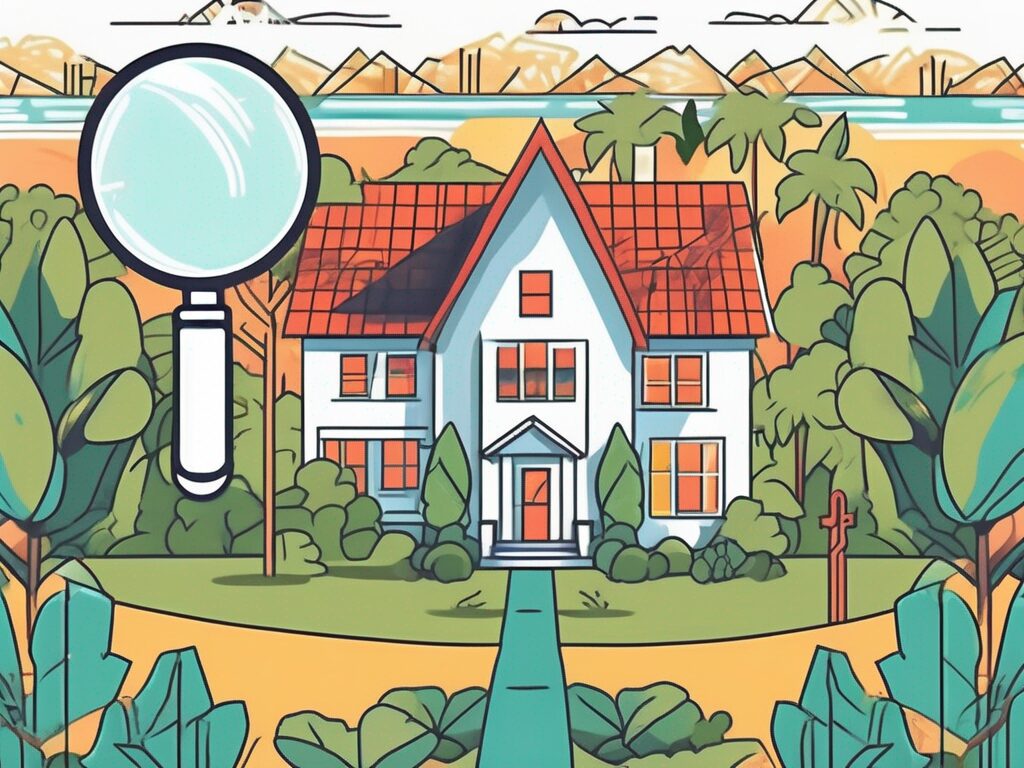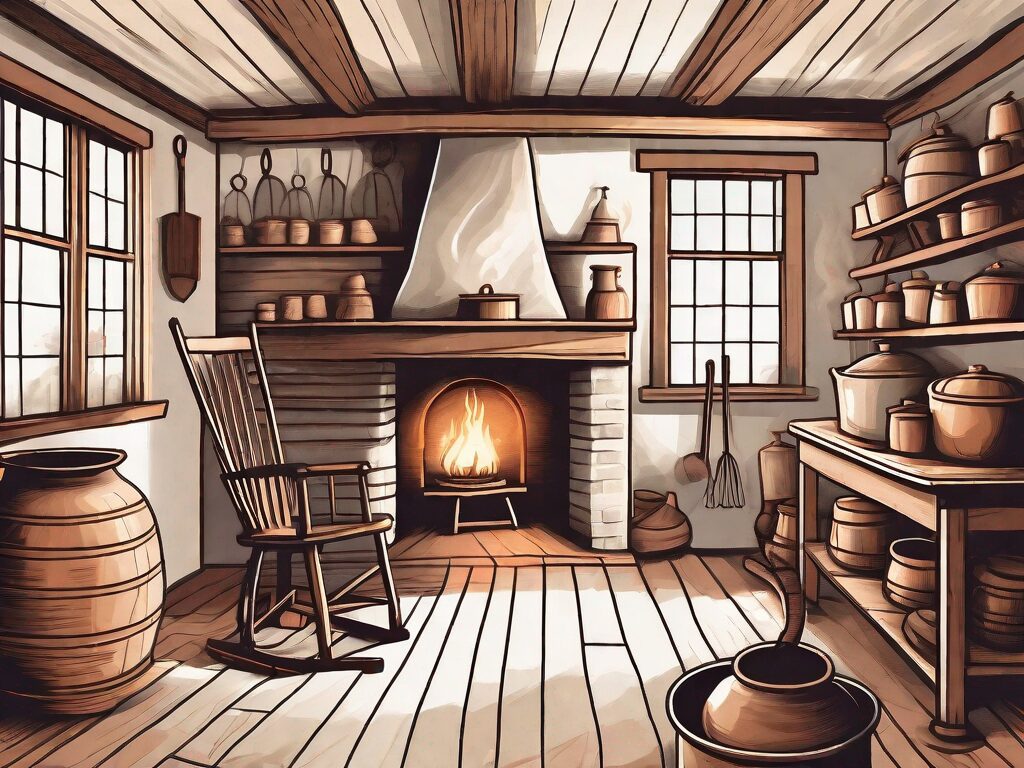
Agent A-Team or Solo Superhero? Finding the Right Real Estate Partner for Your Selling Journey in Wildwood Florida
When it comes to selling your home in Wildwood, Florida,…
January 29, 2024
In today’s modern homes, where open floor plans and multifunctional spaces are the norm, there is one traditional concept that is making a comeback – the keeping room. This once essential room in historical homes is now being incorporated into contemporary layouts, offering a unique blend of tradition and modernity. In this article, we will delve into the history of keeping rooms, explore their essential elements, discuss their resurgence in modern homes, and examine the value they can add to your property. We will also provide some factors to consider before deciding if a keeping room is the right addition for your home.
The concept of the keeping room dates back centuries, originating in Europe during the Middle Ages. At that time, dwellings were often crowded and lacked separate spaces for different activities. The keeping room was a versatile space that served as the central hub of the home, combining the functions of a kitchen, living room, and dining room.
Tracing the history of this traditional space reveals its importance in colonial American homes. Early settlers brought the concept of the keeping room with them, finding it to be a practical solution for their daily needs. In these homes, where space was often limited, the keeping room served as a gathering place for the family, where meals were prepared, enjoyed, and social activities took place.
As the colonies grew and prospered, the keeping room evolved to reflect the changing needs and tastes of the inhabitants. In the 18th century, the keeping room became a symbol of status and wealth, with affluent families showcasing their fine furniture and decorative objects in this central space. Elaborate fireplaces adorned with intricate carvings and mantels became a focal point, providing both warmth and a sense of grandeur.
During this period, the keeping room also served as a place for women to engage in domestic activities such as sewing, spinning, and weaving. It was not uncommon to find looms and spinning wheels in these rooms, as women worked diligently to produce textiles for their families. The keeping room became a space where skills were passed down from one generation to the next, as mothers taught their daughters the art of homemaking.
With the advent of the Industrial Revolution in the 19th century, the keeping room underwent further changes. As technology advanced, households began to acquire more specialized rooms for specific activities, such as a separate dining room or a dedicated kitchen. The keeping room gradually transformed into a more informal space, where the family could relax and spend leisure time together.
By the late 19th and early 20th centuries, the keeping room had become a cozy retreat, often furnished with comfortable chairs, sofas, and bookshelves. It was a place where families gathered to read, play games, or simply enjoy each other’s company. The keeping room became a reflection of the family’s values and interests, with walls adorned with family portraits, shelves filled with books, and tables adorned with cherished mementos.
Today, the concept of the keeping room continues to resonate with homeowners who appreciate the charm and functionality of this traditional space. While modern homes may have separate rooms for cooking, dining, and entertaining, the idea of a central gathering place remains relevant. Whether it’s a cozy nook by the kitchen or a spacious family room, the keeping room serves as a reminder of the importance of togetherness and shared experiences in the home.
When designing a keeping room, it is important to incorporate elements that make it both functional and cozy. One of the key features is a fireplace. Traditionally, keeping rooms were equipped with a fireplace that provided heat and served as a focal point for family gatherings. Today, this element can be preserved or recreated to add an authentic touch to the space.
In addition to a fireplace, comfortable seating is essential in a keeping room. Plush sofas, armchairs, and upholstered benches invite relaxation and create a welcoming atmosphere. Built-in bookshelves and cabinets can also be incorporated to add storage and display space, further enhancing the versatility of the room.
Lighting is another crucial aspect of a keeping room. A combination of natural light and well-placed artificial lighting can create a warm and inviting ambiance. Strategic placement of lamps, chandeliers, or sconces ensures that the room is adequately illuminated for various activities, from reading to socializing.
When it comes to the fireplace in a keeping room, there are various design options to consider. For a more traditional look, a wood-burning fireplace with a brick or stone surround can add a rustic charm to the space. The crackling sound of the fire and the smell of burning wood can create a cozy and nostalgic atmosphere.
On the other hand, for a more modern aesthetic, a gas fireplace with a sleek and minimalist design can be a great choice. With just a push of a button, you can instantly have a warm and inviting fire without the hassle of dealing with wood and ashes. This type of fireplace also offers the convenience of adjustable flames and temperature control.
When selecting seating for a keeping room, comfort should be a top priority. Look for sofas and armchairs with plush cushions and soft upholstery that invite you to sink in and relax. Consider incorporating a mix of seating options, such as a large sectional sofa for lounging and individual armchairs for more intimate conversations.
To add a touch of elegance and functionality to the keeping room, built-in bookshelves and cabinets can be a great addition. These can be used to display family photos, treasured heirlooms, or a collection of books. They also provide storage space for board games, blankets, and other items that you want to keep within reach but out of sight.
When it comes to lighting, a combination of natural and artificial light sources can create a warm and inviting ambiance. Large windows or skylights can bring in ample natural light during the day, while strategically placed lamps, chandeliers, or sconces can provide additional illumination in the evening.
Consider installing dimmer switches for your artificial lighting to create different moods in the keeping room. Lowering the lights can create a cozy and intimate atmosphere for a movie night or a romantic evening, while brighter lights are more suitable for activities that require more visibility, such as reading or playing board games.
Overall, the essential elements of a keeping room go beyond just functionality. They aim to create a space that is warm, inviting, and conducive to relaxation and quality time with family and friends. By incorporating a fireplace, comfortable seating, and appropriate lighting, you can design a keeping room that becomes the heart of your home.
While the concept of the keeping room harkens back to the past, it is not limited to traditional homes. In fact, many homeowners are incorporating old-school charm into contemporary layouts by creating modern keeping rooms. The key is to strike a balance between preserving the historical essence of the space while infusing it with modern design elements.
One way to achieve this is by combining antique or vintage furniture with sleek, modern pieces. Mixing old and new creates a visually interesting contrast that adds character and depth to the room. Imagine walking into a modern keeping room and being greeted by a beautifully restored antique wooden table, surrounded by contemporary chairs with clean lines and minimalist design. The juxtaposition of the old and new creates a unique aesthetic that is both timeless and fresh.
Additionally, incorporating traditional materials such as exposed brick or reclaimed wood can evoke a sense of history, even in a modern space. Picture a keeping room with a stunning feature wall made of weathered, reclaimed wood. The rich texture and warm tones of the wood instantly transport you to a bygone era, while the sleek furnishings and modern lighting fixtures remind you that you are firmly rooted in the present.
Another way to infuse a keeping room with modernity is through the use of technology. Integrating smart home features, such as automated lighting or a state-of-the-art sound system, brings the space into the 21st century, without compromising its traditional charm. Imagine being able to control the ambiance of your keeping room with a simple voice command, adjusting the lighting to create the perfect atmosphere for relaxation or entertaining. Or imagine having a cutting-edge sound system seamlessly integrated into the room, allowing you to enjoy your favorite music or podcasts while you unwind in the cozy comfort of the keeping room.
Furthermore, modern keeping rooms can also incorporate elements of sustainability and eco-friendliness. Imagine a keeping room with large windows that allow natural light to flood the space, reducing the need for artificial lighting during the day. Picture eco-friendly materials, such as bamboo flooring or recycled glass countertops, adding a touch of environmental consciousness to the room. By combining modern design with sustainable choices, homeowners can create keeping rooms that not only look beautiful but also contribute to a greener future.
In conclusion, the blending of tradition and modernity in keeping rooms offers homeowners a unique opportunity to create spaces that are both nostalgic and contemporary. By carefully selecting a mix of antique and modern furniture, incorporating traditional materials, embracing technology, and considering sustainable choices, homeowners can design keeping rooms that honor the past while embracing the present and future.
In recent years, there has been a resurgence in the popularity of keeping rooms in modern homes. As homeowners seek to create spaces that foster connection and community, the multifunctionality of the keeping room makes it an attractive addition. Whether used as a cozy family gathering spot, a home office, or a playroom, the versatility of the keeping room allows it to adapt to the changing needs of a household.
Furthermore, the resurgence of the keeping room can be attributed to the desire for a break from the open concept floor plans that have dominated home design in recent years. While open spaces are great for entertaining and visual flow, they can sometimes lack intimacy and privacy. Incorporating a keeping room into the floor plan allows for a designated space that provides a sense of enclosure and coziness.
When it comes to the design of a keeping room, homeowners have a myriad of options to choose from. Some may opt for a rustic aesthetic, with exposed wooden beams, stone accents, and a fireplace as the focal point. This creates a warm and inviting atmosphere, perfect for cozying up with loved ones on a chilly evening.
Others may prefer a more contemporary approach, with sleek furniture, clean lines, and minimalistic decor. This type of keeping room exudes a sense of modernity and sophistication, providing a stylish space for both relaxation and productivity.
In addition to its versatility in function and design, the keeping room also offers practical benefits. For families with young children, having a designated playroom within close proximity to the main living area allows parents to keep an eye on their little ones while still engaging in other activities. It provides a safe and convenient space for children to play and explore, without the need for constant supervision.
For those who work from home, a keeping room can serve as the ideal home office. With its cozy ambiance and separate space from the rest of the house, it provides a conducive environment for productivity and focus. Away from the distractions of the main living areas, individuals can create a dedicated workspace that promotes efficiency and concentration.
Moreover, the resurgence of the keeping room has also been influenced by the desire for a return to traditional values and a sense of nostalgia. In the past, keeping rooms were a central hub of the home, where families would gather to spend quality time together. By reintroducing this concept into modern homes, homeowners are able to recreate that sense of togetherness and connection.
Overall, the resurgence of the keeping room in modern homes can be attributed to its multifunctionality, ability to provide intimacy in open floor plans, and its practical benefits for families and remote workers. Whether it’s used as a cozy family gathering spot, a home office, or a playroom, the keeping room offers a versatile and inviting space that enhances the overall livability of a home.
In addition to the inherent benefits of a keeping room, such as functionality and aesthetics, it can also add value to your home. Buyers are increasingly seeking out properties that offer unique and distinct features, and a well-designed keeping room can set your home apart from the competition.
When considering the impact on property value, it is important to focus on the overall appeal and functionality of the room. A well-designed keeping room that seamlessly blends with the rest of the home’s design and meets the needs of potential buyers can positively influence their perception of the property’s value.
One of the key advantages of a keeping room is its versatility. This multi-purpose space can serve as a cozy gathering spot for family and friends, a quiet reading nook, or even a home office. By showcasing the potential uses of the keeping room, you can demonstrate to potential buyers the flexibility and added functionality it brings to the home.
Furthermore, the design and aesthetics of the keeping room play a crucial role in its value-enhancing potential. Incorporating high-quality materials, such as hardwood floors, custom cabinetry, and stylish lighting fixtures, can elevate the overall look and feel of the room. Additionally, thoughtful details like built-in bookshelves, a fireplace, or large windows that offer ample natural light can further enhance the appeal and desirability of the space.
Another factor to consider when assessing the value added by a keeping room is the local real estate market. Different regions may have varying preferences and trends when it comes to home features. Researching the market and understanding the demands of potential buyers in your area can help you tailor the design and functionality of your keeping room to maximize its value.
Consulting with a real estate professional can provide valuable insights into the specific impact a keeping room may have on your home’s value. They can offer guidance on current market trends, buyer preferences, and suggest any modifications or improvements that could further enhance the appeal of your keeping room.
In conclusion, a well-designed keeping room can not only enhance the functionality and aesthetics of your home but also add value. By considering the overall appeal, versatility, and local market trends, you can create a keeping room that becomes a standout feature, attracting potential buyers and increasing the perceived value of your property.
Before deciding to create a keeping room in your home, it is important to consider several factors. Firstly, assess your space and layout to determine if you have the square footage available to accommodate a keeping room. Since keeping rooms are meant to be multifunctional spaces, it is essential to ensure that you have enough room to comfortably incorporate the desired features.
Secondly, consider your lifestyle and how a keeping room would fit into it. If you frequently entertain or have a large family, a keeping room can provide a valuable gathering space. However, if you prefer open spaces or have limited need for additional gathering spots, a keeping room may not be a necessary addition for your home.
Lastly, take into account your budget and the potential return on investment. Creating a keeping room can involve significant costs, including remodeling expenses and furnishings. Before embarking on this project, weigh the potential benefits against the financial investment to ensure it aligns with your long-term goals.
In conclusion, the history of keeping rooms provides a fascinating glimpse into a tradition that has stood the test of time. From their origins in medieval Europe to their resurgence in modern homes, keeping rooms offer a unique combination of functionality and charm. Incorporating essential elements such as a fireplace, comfortable seating, and proper lighting ensures the creation of a cozy and inviting space. Whether you choose to embrace tradition or infuse modernity, a well-designed keeping room can add value to your home and enhance your daily living experience. Consider the factors discussed before deciding if a keeping room is the right addition for your home, and enjoy the timeless appeal of this must-have space.

If you want the Richr team to help you save thousands on your home just book a call.
 Book a call
Book a call